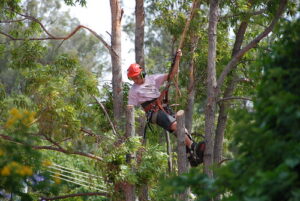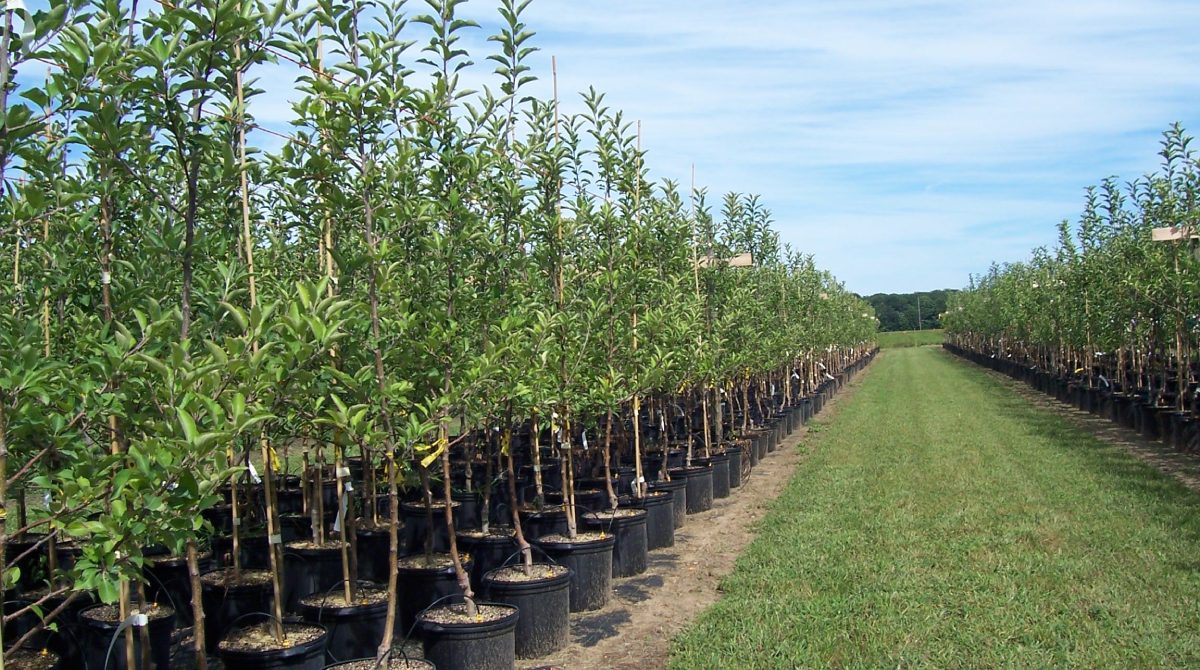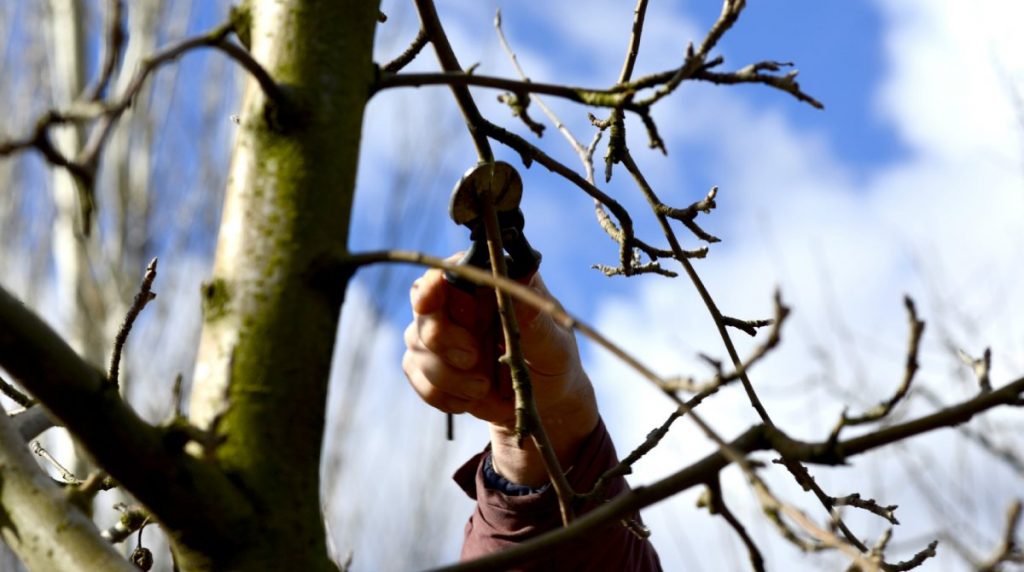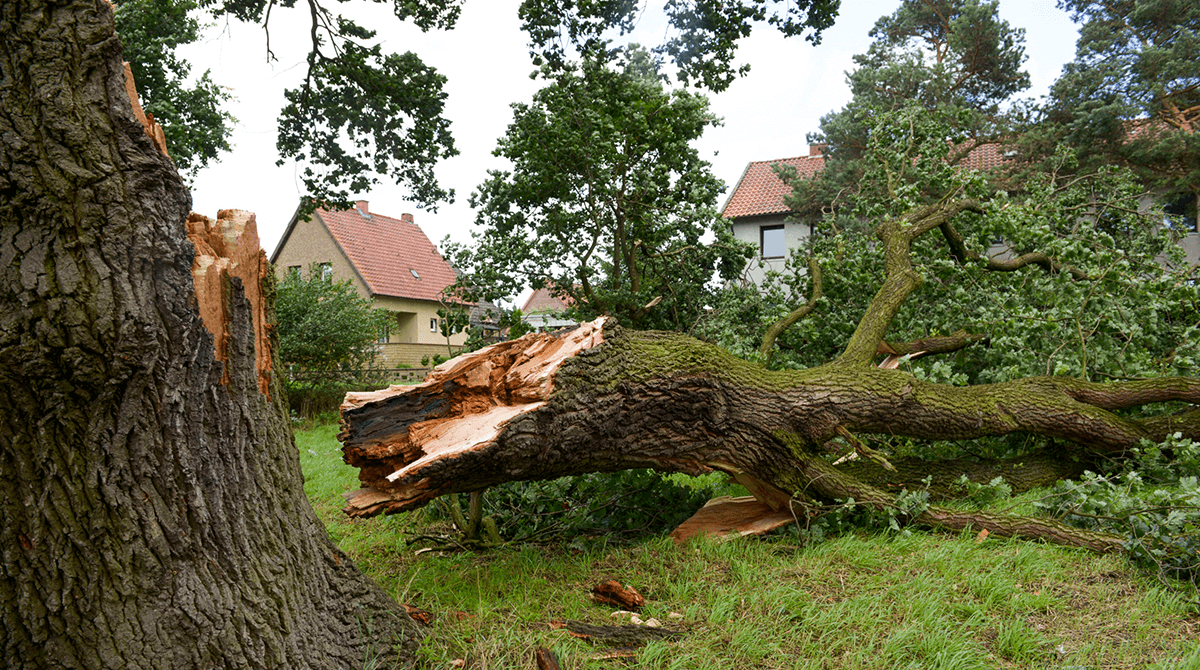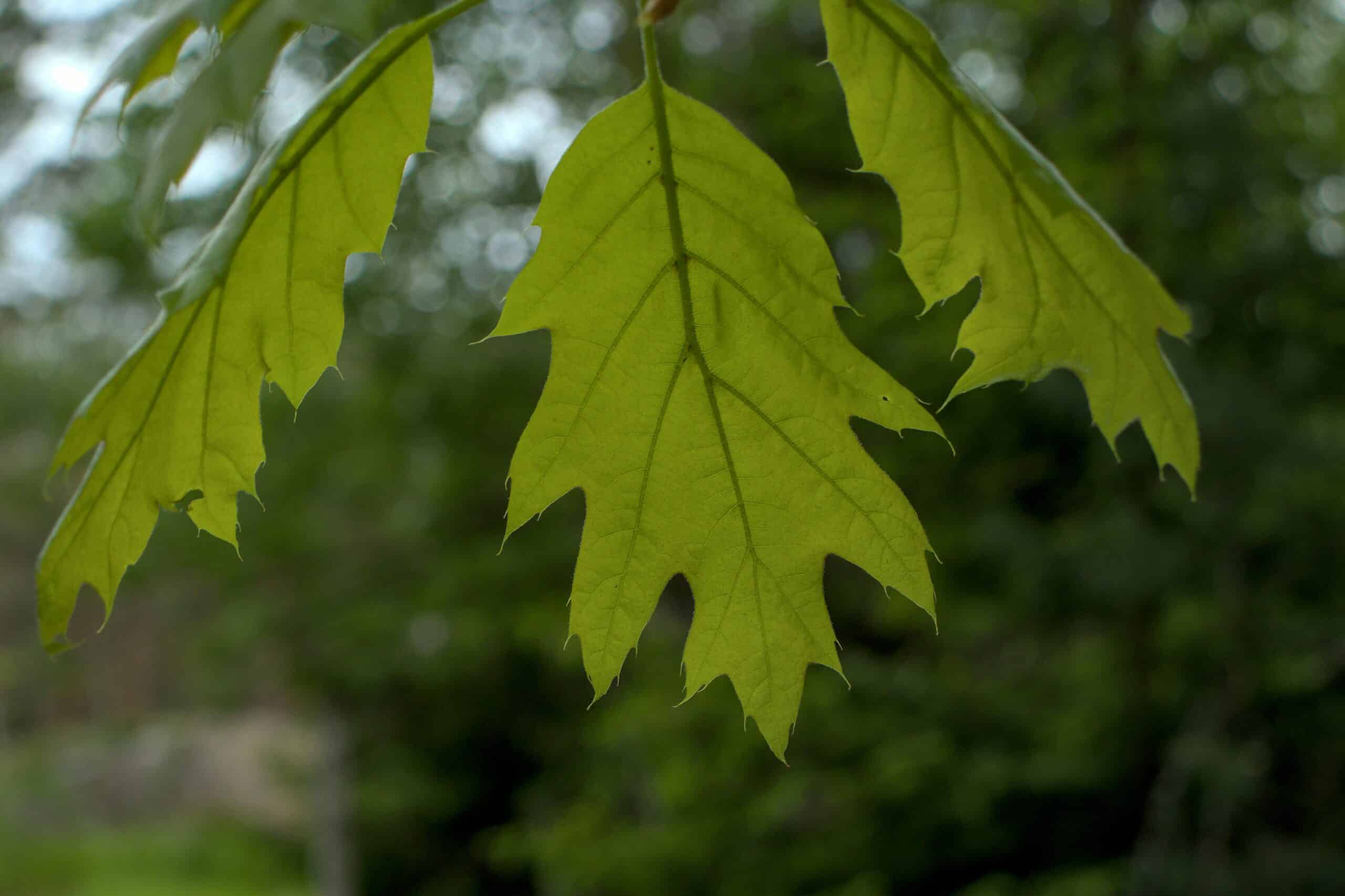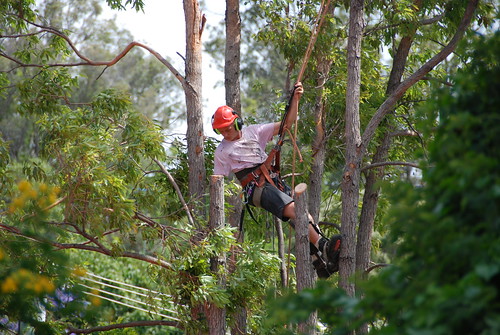
Date February 27, 2023
Trees can really benefit homeowners, increasing property values by up to 15% and slashing cooling bills by as much as 50%. However, left to grow freely, trees can also cause substantial damage. House clearance pruning can keep trees under control while keeping the property safe.
What Damage Occurs When Trees Grow Close to Houses?
Image via Flickr by Laurence Lewis
The branches of trees growing close to houses can rub against fixtures such as gutters, roofs, windows, and siding. If left unchecked, the branches can bend or break through these features, damaging their structural integrity and compromising the home. Impacting the home can also damage the tree, unlike pruning which keeps the tree strong and encourages healthy growth.
Unpruned trees may also create too much shade over a roof. Excess shade can encourage moss growth on the roof. Moss can collect water, which can erode tiles and create cracks when it freezes. The root-like structures moss uses to anchor itself to a roof can also cause tiles to crack, warp, and move. Roof moss can also introduce water into homes, which can cause further damage and mold. Homeowners with solar power may also find the excess shade impacts their panels’ efficiency.
Plants all compete for the same resources, including water, sunlight, and nutrients from the soil. When trees grow naturally without pruning, they can become too dominant. Smaller plants may die because they are unable to access the resources that they need to thrive.
What Does House Clearance Pruning Involve?
House clearance pruning typically involves cutting back or removing a tree’s branches so they are farther away from a house. As a rule, professionals prune trees to give three-foot clearance to a house’s walls. They also allow 8-foot clearance of roofs and 10-foot clearance of chimneys. Experienced arborists carefully select branches for removal to help the tree keep its natural shape and reduce the risk of decay and disease. In the hands of a skilled arborist, a pruned tree may look as if it’s had no work at all.
How Often Is Pruning Recommended?
After homeowners get their trees pruned for house clearance, they need regular maintenance to keep them clear of their homes. Texas’ warm temperatures encourage tree growth, so it’s important to prune trees in the Lone Star State regularly. Fruiting and flowering trees need the most frequent pruning, with pruning recommended whenever the fruits or flowers wither away. This will be at least twice a year but may be more often depending on the species. Homeowners with young trees they want to keep short may get these trees pruned annually. Larger, more established trees need pruning roughly every two years.
Keeping trees pruned for house clearance is vital, but it can also be dangerous. From minor injuries like cuts and scrapes to more serious injuries from falls and electrocution, homeowners who prune their own trees may be at risk. Treenewal provides a safer alternative, with professionals who adhere to proper International Society of Arboriculture regulations and safety standards. They also understand national pruning standards. Servicing the Dallas and Fort Worth Metroplex, Treenewal is the obvious choice for homeowners seeking a safe and professional tree pruning team.
